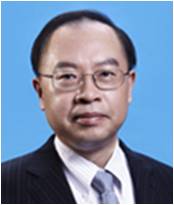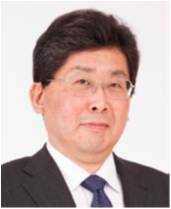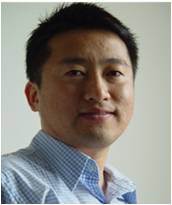- November 9-11, 2015
Plenary Talks:
Securing the Society with Silicon Systems

|
Dr. LeoLi CEO, Spreadtrum China “Future Mobile Society Beyond Moore’s Law” Nov. 10(Tue) |

|
Dr. Hideto Hidaka SVP and CTO, Renesas Electronics, Japan “Mobility and IoT Systems Revisit Semiconductor Technology” Nov. 11(Wed) |
|

|
Dr. Ronard Perez Security Fellow, Rambus, USA “Silicon Systems Security and Building a Root-of-Trust” Nov. 10(Tue) |

|
Dr. Sang Yeun Cho VP, Samsung,Korea “Fast Memory and Storage Architectures for the Big Data Era” Nov. 11(Wed) |
| Title | IC Challenges for 5G Mobile Devices | |
| Speaker | Dr. Leo Li |  |
| Position | President &CEO | |
| Affiliation | Spreadtrum Communication, China | |
| Time/Place | 8:45-9:30 Nov. 10 (Tue),2015 / Room #1F | |
|
Biography: Dr. Leo Li,Chairman, CEO and President of Spreadtrum Coummunications, Inc, has almost 30 years of experience in the wireless communications industry. Joining Spreadtrum in May 2008. From 2005 to 2007, Dr. Li served as the CEO of Magicomm Technology Inc., a cell phone product development company. From 2002 to 2005, Dr. Li served as Senior Business Development Director at Broadcom and was responsible for a line of GSM/GPRS/EDGE/WCDMA baseband business. From 1998 to 2002, Dr. Li served as General Manager of Mobile Phone Product and Vice President of Moblink Telecom, a GSM baseband start-up company that was sold to Broadcom in 2002. Prior to 1998, Dr. Li held various senior engineering and program management positions at Rockwell Semiconductors and Ericsson. Dr. Li holds 10 patents in wireless communication systems, RF IC system and circuit designs, and RFID applications. Dr. Li received a BS degree from the University of Science and Technology of China in Hefei, China; a MS degree from the Institute of Electronics, Chinese Academy of Sciences in Beijing, China; a Ph.D. degree in Electrical Engineering from the University of Maryland in College Park, Maryland, USA; and an MBA degree from the National University in La Jolla, California, USA. Abstract: Having 5X to 10X higher data rate than 4G mobile which is already in a few hundreds Mbps, 5G mobile, which is said to be commercialized in 2020, presents a sounding challenge to implementation of ICs used in 5G mobile devices. 5G mobile is expected to embrace some new technologies. 1. going to high frequency spectrum with range of 6GHz to 60GHz. 2. adoption of new schemes like non-orthogonal multiplex and full duplex. 3. use of distributed radio and centralized computing. Proposed new technologies for 5G compose some of big IC implementation issues. Developing millimeter wave RF IC with cost and power consumption that could meet requirement of a mobile device is something that have not been done well so far. New link schemes like full duplex present implementation issues given high transmitting power in cellular system. New receivers with high data rate also require low power, high bandwidth, high precision ADC/DAC that can be integrated into a mobile SoC. Integration of distributed radio and merging of different cellular and non-cellular standards makes SDR necessary but a cost-effective power-saving SDR is difficult to achieve. In the presentation some key IC implementation challenges for 5G mobile devices are described, and technologies that may lead to possible solution to those challenging issues are discussed. |
||
| Title | Silicon Systems Security and Building a Root-of-Trust | |
| Speaker | Dr. Ron Perez |  |
| Position | Systems Security Fellow | |
| Affiliation | Rambus, USA | |
| Time/Place | 9:30-10:15 Nov. 10 (Tue),2015 / Room #1F | |
|
Biography: Dr. Ron Perez is the Systems Security Fellow at Rambus Cryptography Research. Prior to joining Cryptography Research, Ron held the position of Senior Fellow and Senior Director at Advanced Micro Devices (AMD), where he established and led the Security Architecture organization. Ron also served as Senior Manager and Senior Technical Staff Member at the IBM T. J. Watson Research Center for over a dozen years, where he led the Systems Solutions and Architecture Department, multiple teams of research scientists and engineers pursuing advances in a diverse set of systems technologies including virtualization and systems management, next generation memory subsystems, stream computing, multimedia and information theory. Ron co-founded and represented AMD on the Board of Directors of the Cyber Security Research Alliance, Inc., an industry-led, non-profit consortium focused on research and development strategies to address the evolving cyber security environment. Prior to his years at IBM Research, Ron developed aspects of fault tolerant systems at Tandem Computers, and worked in a number of areas related to systems software and single board computers at Motorola. Ron holds 21 US patents, has over 20 publications, and received his degree in CS from The University of Texas at Austin. Abstract: Systems Security is an established discipline with a very long and rich history stretching back multiple decades. This discipline is founded on well-accepted axioms such as the Trusted Computing Base and Reference Monitors. The progression of security technologies from secure operating systems and Security Kernels with processor support, to dedicated security subsystems such as Hardware Security Modules and Trusted Platform Modules, has mirrored the increased number and severity of vulnerabilities and the increasingly sophisticated threat landscape that has accompanied the exponential growth in functionality and complexity of computing systems. In the context of this long and rich history, its foundational axioms, the progression of security technologies, this presentation will discuss the importance of having a silicon-based root-of-trust to address the significant security challenges stemming from the emergence of billions of complex hyper-connected silicon systems. This root-of-trust approach must protect and manage sensitive data and operations, and securely enable functionality throughout the entire lifecycle of the silicon systems in which they reside. From initial manufacturing to in-field usage, a silicon-based root-of-trust directly supports secure provisioning, configuration, and operation for an increasing number of stakeholders that must rely upon the soundness of these security properties in order to support ever growing functionality and value. |
||
| Title | Mobility and IoT Systems Revisit Semiconductor Technology | |
| Speaker | Dr. Hideto Hidaka |  |
| Position | SVP and CTO | |
| Affiliation | Renesas Electronics, Japan | |
| Time/Place | 8:30-9:15 Nov. 11 (Wed),2015 / Room #1F | |
|
Biography: In Mitsubishi Electric, Renesas Technology, and Renesas Electronics, he has been engaged in the research and development of DRAM, embedded DRAM, embedded Flash, embedded NV memory, and related technology platforms and IPs for MCU and SOC products. Since 2005 he and his team have created the world’s first split-gate embedded SONOS flash memory for MCU products at 90nm technology, which changed the MCU technology trend for automotive applications in performance, power, and reliability advantages. He has consistently led the MCU technology and business strategies enabling the world’s top MCU producer position by Renesas Electronics Corp., where he is now the CTO responsible for all the corporate R&D activities. He earned the B.S., M.S., and Ph.D. degrees in electronic engineering from the University of Tokyo. He has authored and co-authored more than 70 journal papers and conference papers, as well as 293 US patents and 193 Japanese patents issued. In his professional life he was a visiting scientist at the MIT in 1987-88, a lecturer in Tokyo Institute of Technology in 2012-15, and has served on program committees for major conferences: ISSCC for the Memory Subcommittee Chair, Program Committee Vice-chair and Chair (2011-12), as well as A-SSCC, ICICDT, VLSI-TSA, and IEICE-ICD. He is a member of the IEEE SSCS Adcom, Chair of IEEE-SSCS Kansai Chapter, and an SSCS Distinguished Lecturer. Abstract: In the modern automotive technology where Control (on mobility/energy in physical-world) meets IT (by information in cyber-world), we explore every capability of efficiency /performance /cost based on existing technology, with newer system challenges. Essential new sub-system technologies triggered by functionality requirements over physical through cyber systems include; security, functional safety, sensing, and connectivity etc. On top of these sub-system technologies shared with motor-control, Industry 4.0 by M2M, and trillion sensory systems by IoT, a new challenge for 2030 should be the extensive system-wide knowledge and design through the physical and cyber systems (CPS) in coordinated ways in order to better use variety of existing semiconductor technology. On the other hand the system design should consider different physical/human system behaviors, for instance, in auto (instant mobility, idle, shut-down) and motor control in industry (constant mobility, 24/7/365 operations) applications. In this talk the speaker re-evaluates Si design/technology capabilities and limitations in each of the key sub-system technology for personalized mobility and IoT into an agenda plan for 2030. Also issues in multi-system design, triggering innovation, R&D funding, and education are addressed in view of the roles taken by government/academia/industry. |
||
| Title | Fast Memory and Storage Architectures for the Big Data Era | |
| Speaker | Dr. Sangyeun CHO |  |
| Position | VP, Advanced Solutions, Memory Business | |
| Affiliation | Samsung Electronics Co. , Korea | |
| Time/Place | 9:15-10:00Nov. 11 (Wed),2015 / Room #1F | |
|
Biography: Dr. Sangyeun Cho is a VP for advanced solutions R&D at the Memory Business Unit of Samsung Electronics. From 1999 to 2004, he was with the System LSI Business Unit of Samsung Electronics and contributed to the development of its flagship embedded processor core family called CalmRISC(TM). He was a lead architect of CalmRISC-32, a 32-bit microprocessor core, and designed its memory hierarchy. In 2004, he joined the faculty of the Computer Science Department at the University of Pittsburgh and was promoted to the rank of tenured associate professor in 2010. During his years as faculty, his research agendas include multi-core processor architectures, memory hierarchy design and emerging solid-state storage technologies. He has been working with Samsung’s Memory Business in 2012. Abstract: The rate of data growth is expected to propel. People and things continue to generate data, some of which are then transmitted, stored and analyzed. In many ways, stored data pose a great value to those who have access to them---but only if the data can be accessed and analyzed in a timely manner. For many (new) interactive applications, traditional storage systems built with rotating magnetic media (hard disk drives) fall short because of their slow data access rate and high energy consumption. Clearly, solid-state memory and storage systems will play the central role in demanding big data analytics applications. For example, how quickly can you detect fraud in on-line transactions and how much memory is needed to hold critical data for fast decision making? How much stored data can one process in a given time to offer relevant in-situ business intelligence? Emerging memory- and storage-centric system architecture innovations are expected to enable cost-effective high-performance data analytics. In this talk, recent advances in solid-state memory and storage system technologies and new R&D challenges in the context of big data processing will be presented. In the course of the presentation some of the broader driving forces and trends in the memory industry will be outlined as well. |
||

